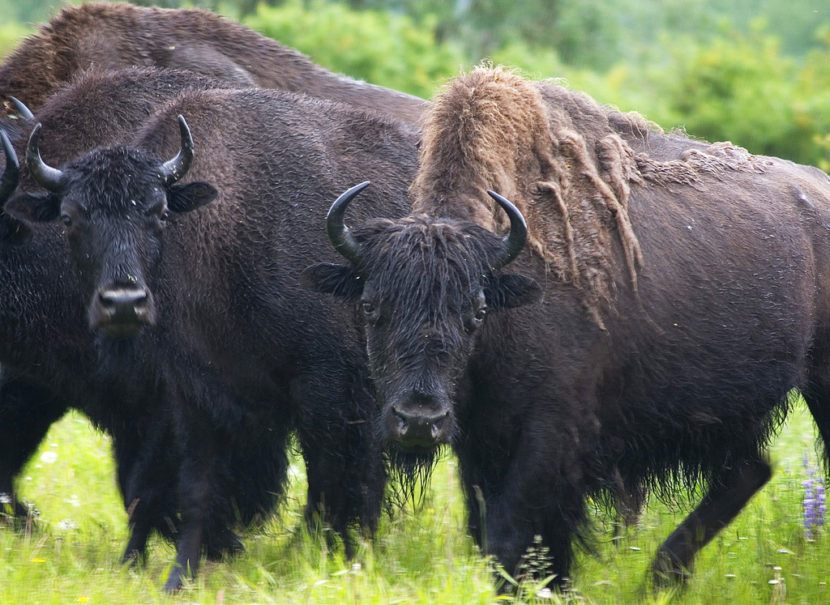Wood bison calves arrive at LARS

A group of young wood bison are temporarily staying at UAF's Large Animal Research Station.
Alaska Department of Fish and Game news release.
Forty eleven-month-old wood bison from Elk Island National Park in Canada have a new home in Alaska. Parks Canada, the Alaska Department of Fish and Game, and the federal Bureau of Land Managementhave facilitated the transfer of 40 11-month-old wood bison to the UAF Large Animal Research Station in ╠ăđ─vlog╣┘═°. The bison were transported by truck across the border, leaving Elk Island National Park, near Edmonton, Alberta, the morning of April 13 and arriving in ╠ăđ─vlog╣┘═° the evening of April 14.
In late 2021, ADF&G and BLM formalized a long-term partnership that includes BLM staff, logistics, environmental analysis, and funding to support the project. This past winter, ADF&G officially applied to receive surplus wood bison from Parks Canada and Elk Island National Park. In February, Elk Island staff confirmed that surplus wood bison calves would become available to travel to Alaska in April. In early April, final health screenings were completed, and 40 bison were approved for travel. Elk Island National Park has provided healthy wood bison that have helped initiate and recover wild populations throughout their original range.
The almost-yearling bison will reside temporarily at UAF LARS, a research facility that is currently home to reindeer and muskox that helps support research, education, and outreach focused on Alaska animals. The wood bison must be isolated for a minimum of 30 days after traveling to make sure they remain healthy, disease-free, and ready for potential release. After the isolation period these bison will become a part of the captive wood bison population that ADF&G has available for release into the wild.
ÔÇťMost of these bison will likely be used to augment the Lower Innoko-Yukon Rivers population, but some may help in future efforts to start new wild populations,ÔÇŁ said ADF&G Wood Bison Biologist Tom Seaton.
In 2015, after decades of preparation, 130 wood bison were released to the Lower Yukon-Innoko Rivers area. Those animals were also originally from Elk Island and were held prior to release at the Alaska Wildlife Conservation Center, 45 miles southeast of Anchorage. About 30 wood bison, mostly bison born at the center, still live at AWCC. ÔÇťMany of the wood bison at AWCC are too old for release at this point, but future attempts to start new populations in the wild could include the younger individuals from AWCC and some from this most recent import,ÔÇŁ Seaton said. Wood bison are native to Interior and Southcentral Alaska and Northwestern Canada and were historically abundant across their range. By the early 1900s, they had disappeared from Alaska and only a few hundred remained in Canada. Restoring wood bison populations is a goal shared internationally by a variety of organizations, agencies, universities, and tribal governments. Many groups are working collaboratively to ensure that the arrival of more wood bison to Alaska is a success including ADF&G, UAF LARS, Elk Island National Park/Parks Canada, the U. S. Department of Agriculture (USDA), the U. S. Fish and Wildlife Service (USFWS), AWCC, private landowners such as the rural Alaska Native Village Corporations and Alaska Native Regional Corporations, and especially those involved with the Wood Bison Management Planning Team. Funding from the ADF&G cooperative agreement with BLM made this transport of bison possible.
Seaton said these imported bison have the potential to increase the population of wild wood bison in the U.S. by as much as 30 percent while adding to their genetic diversity. ÔÇťThis constitutes a massive contribution to the restoration of wood bison,ÔÇŁ he said.
MEDIA CONTACT: Tom Seaton, 907-459-7235, tom.seaton@alaska.gov


